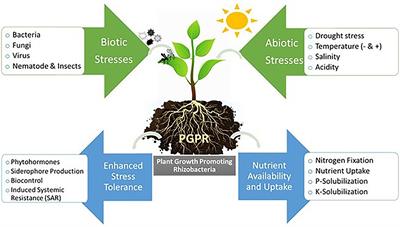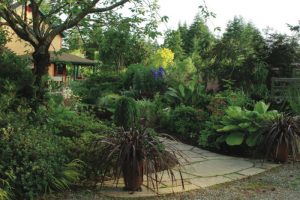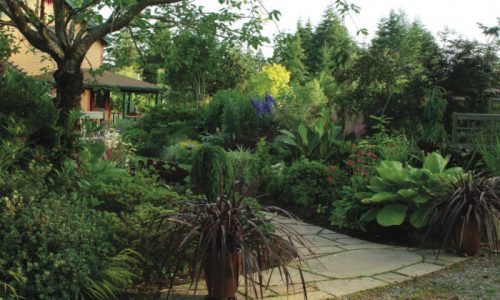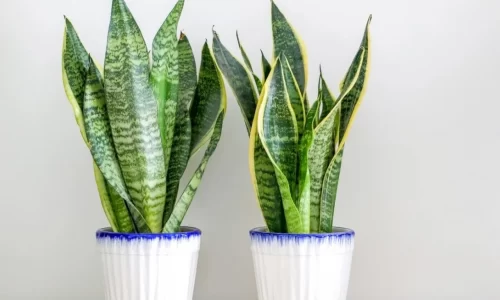Introduction:
When it comes to sustainable gardening and landscaping practices, soil health is of paramount importance. The temperature of the soil plays a crucial role in determining the success of any green space, as it directly affects plant growth, nutrient availability, and microbial activity. In this blog, we will delve into the fascinating world of soil temperature, with a specific focus on its significance in greencast environments. By understanding the relationship between soil temperature and green spaces, we can optimize our efforts to create thriving, eco-friendly landscapes.
Understanding Soil Temperature:
Soil temperature refers to the measurement of heat energy within the soil. It is influenced by various factors, including climate, sunlight exposure, organic matter content, water retention, and human activities. The temperature of the soil affects both the physical and biological processes within it, ultimately impacting the health and vitality of plants.
Significance of Soil Temperature in Greencast Environments:
Plant Growth and Development:
Soil temperature directly influences the growth and development of plants. Different plant species have specific temperature requirements for optimal growth. Understanding these requirements helps in selecting the right plants for a greencast environment. Warmer soil temperatures promote faster germination, root growth, and nutrient uptake, leading to healthier and more vigorous plants.
Nutrient Availability:
Soil temperature affects the availability and uptake of essential nutrients by plants. Higher temperatures can enhance the rate of nutrient mineralization, making them more accessible to plant roots. Conversely, extremely low temperatures can limit nutrient availability, inhibiting plant growth. Proper soil temperature management ensures that plants receive a balanced supply of nutrients, fostering their overall well-being.
Microbial Activity:
Soil is teeming with diverse microorganisms that play a crucial role in nutrient cycling and organic matter decomposition. Soil temperature directly impacts the activity and abundance of these beneficial organisms. Optimal soil temperatures encourage microbial diversity and activity, enhancing nutrient availability and soil structure. A well-balanced greencast environment fosters healthy microbial communities, contributing to long-term soil health.
Water Management:
Soil temperature affects water retention and evaporation rates. Warmer soils tend to dry out faster, necessitating more frequent irrigation. Conversely, cooler soils retain moisture for longer periods. Understanding soil temperature variations helps in developing efficient watering schedules, preventing water wastage and ensuring proper hydration for plants.
Optimizing Soil Temperature for Greencast Success:
Soil Testing:
Regular soil testing helps determine the temperature of the soil and provides valuable insights into its nutrient composition. By identifying any temperature imbalances or deficiencies, gardeners can take appropriate measures to optimize conditions for plant growth.
Mulching:
Applying a layer of organic mulch around plants helps regulate soil temperature by providing insulation. Mulch acts as a protective barrier, reducing temperature fluctuations and maintaining a more stable environment for roots.
Irrigation Management:
Monitoring soil temperature and adjusting irrigation practices accordingly is essential for greencast success. Watering plants during the cooler periods of the day helps lower soil temperature, reducing water loss through evaporation. Additionally, proper drainage systems can prevent waterlogging and subsequent temperature imbalances.
Plant Selection:
Choose plant species that are well-suited to the prevailing soil temperatures in your greencast environment. Native plants, adapted to local climate conditions, are often more resilient and thrive in their natural temperature ranges.
Soil temperature plays a pivotal role in the health and vitality of plants in greencast environments. By understanding its significance and implementing strategies to optimize it, we can create sustainable and resilient landscapes that flourish with life. Here are some additional tips to harness the power of soil temperature for greencast success:
Seasonal Considerations:
Recognize the seasonal variations in soil temperature and adapt your gardening practices accordingly. In colder climates, insulate the soil during winter by using protective coverings such as straw or frost blankets. Conversely, in warmer climates, provide shade or use reflective mulch to prevent excessive heating of the soil during scorching summers.
Soil Amendments:
Certain soil amendments can help regulate soil temperature. Organic matter, such as compost or well-decomposed manure, improves soil structure, moisture retention, and temperature moderation. It acts as an insulating layer, buffering extreme temperature fluctuations and creating a more favorable environment for plant roots.
Microclimate Management:
Different areas within a greencast environment may have varying soil temperatures due to factors like sunlight exposure, wind patterns, and proximity to structures or bodies of water. Identify microclimates in your landscape and select plant species that are well-adapted to the specific soil temperature conditions of each area.
Monitoring and Adjusting:
Regularly monitor soil temperature using a soil thermometer to stay informed about the conditions your plants are experiencing. Measure the temperature at various depths to understand temperature gradients within the soil profile. Based on the readings, make necessary adjustments to irrigation schedules, mulch thickness, or other management practices.
Automation and Technology:
Consider employing automated systems and technology to assist in maintaining optimal soil temperature. Smart irrigation systems can also be programmed to water plants during specific times of the day to help regulate soil temperature. Additionally, soil sensors can provide real-time data on temperature variations, allowing you to make informed decisions about irrigation and other interventions.
Continuous Learning:
Stay informed about the latest research and advancements in soil temperature management. Attend workshops, consult with gardening experts, and engage in online communities to exchange knowledge and learn from others’ experiences. A willingness to adapt and evolve your practices based on new information will lead to better outcomes for your greencast endeavors.
By paying attention to soil temperature and implementing appropriate measures, we can create greencast environments that are not only visually appealing but also ecologically sustainable. Balancing the needs of plants with the dynamic nature of soil temperature fosters healthy growth, encourages biodiversity, and supports the long-term well-being of our green spaces.
Thermal Mass:
Utilize materials with high thermal mass, such as rocks or water features, strategically in your landscape. These elements can absorb and release heat slowly, acting as temperature regulators for the surrounding soil. By incorporating them into your greencast design, you can help stabilize soil temperature fluctuations.
Season Extension:
For those interested in extending the growing season or cultivating plants that require specific temperature conditions, consider employing season extension techniques. These may include using hoop houses, cold frames, or row covers to create microclimates that provide a more controlled environment for your plants.
Heat Island Effect:
In urban areas, the phenomenon known as the “heat island effect” can significantly impact soil temperature. Concrete, asphalt, and buildings absorb and radiate heat, creating hotter conditions compared to surrounding rural areas. Mitigate the heat island effect by incorporating green infrastructure, such as green roofs or vertical gardens, to reduce soil temperature and improve overall environmental quality.
Climate Change Adaptation:
Given the increasing impact of climate change, it is crucial to adapt our greencast practices to changing temperature patterns. Monitor local climate projections and make adjustments to plant selection, irrigation strategies, and soil management techniques accordingly. Adapting to changing conditions will help ensure the long-term sustainability of your greencast environment.
Education and Awareness:
Promote the importance of soil temperature management within your community. Encourage others to adopt greencast practices that prioritize soil health and temperature optimization. By spreading awareness and knowledge about the significance of soil temperature, we can collectively create a greener and more sustainable future.
Incorporating these additional considerations into your greencast endeavors will help you refine your approach to soil temperature management. By staying informed, adapting to evolving conditions, and sharing your experiences with others, you contribute to the larger movement toward environmentally conscious greencast practices.
Conclusion:
Soil temperature is an influential factor in the success of greencast environments. By recognizing its impact on plant growth, nutrient availability, microbial activity, and water management, we can make informed decisions to optimize soil temperature for sustainable growth. Implementing strategies such as seasonal adjustments, soil amendments, microclimate management, and automation technology will enable us to create greener spaces that thrive with life and contribute to a healthier planet.
As gardeners and caretakers of our environment, let’s continue to explore, learn, and innovate in the realm of soil temperature management. By prioritizing soil health, we can build a future where greencast spaces flourish, biodiversity thrives, and the beauty of nature coexists harmoniously with sustainable human practices.Enhance Your Gardening Experience with Rural King Potting Soil
[youmightlike]








